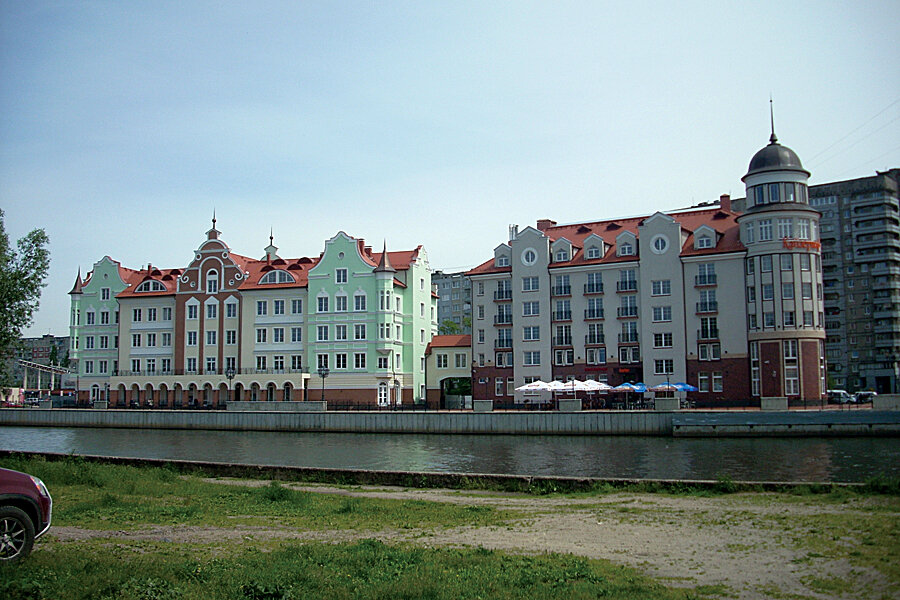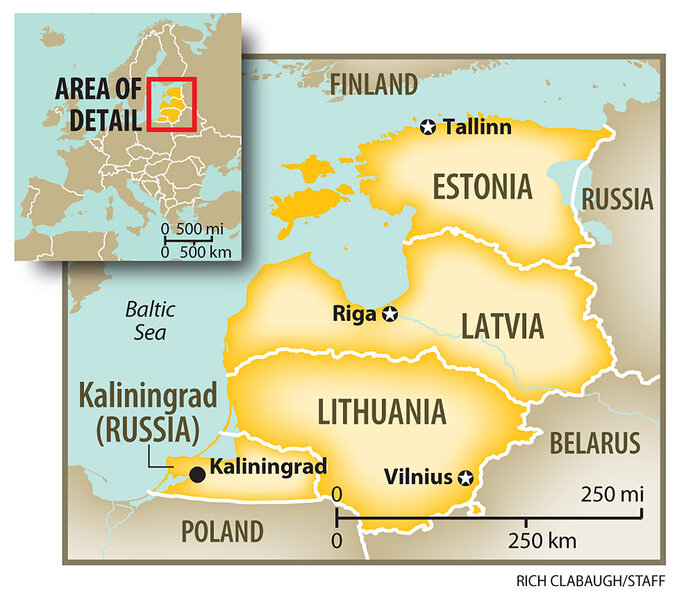A Russian island encircled by Europe: Kaliningrad's dual existence
Loading...
| KALININGRAD, RUSSIA
On the banks of the Pregolya River in the city of Kaliningrad sits the commercial development known as Fish Village. It is a smallish complex of boutique hotels and eateries, with names like Kaiserhof and Hofburg written in Cyrillic script. The buildings themselves are knockoffs of medieval German architecture, not typically found elsewhere in Russia.
But Kaliningrad is not a typical Russian city. For 700 years, it was Königsberg, a city at the eastern frontier of German-speaking lands and later the capital of East Prussia in Bismarck's Germany. But its annexation by the Soviet Union – and the USSR's subsequent collapse – transformed the region, leaving it between two worlds: politically Russian, but geographically – and historically – European.
"I am proud to be born in such a rich place in terms of history," says Marina Karlova, a student in Kaliningrad.
Ms. Karlova's sentiments are common for young people in Kaliningrad, but represent a marked change for a region that Soviet Russia once tried to rid of its German heritage.
After World War II, the Soviets seized most of East Prussia, renaming the city and region Kaliningrad and expelling its remaining German population to make way for Russian settlers. The medieval cityscape, destroyed by the war, was rebuilt with massive apartment blocks and statues of Lenin and Marx.
But as the Soviet system became less rigid, academics, writers, and everyday citizens began to take serious interest in Kaliningrad's past. The last bit of the medieval city, the Königsberg Cathedral, was refurbished and finally completed in 2005, the 750th anniversary of the city's founding.
In 1992, the dissolution of the Soviet Union left Kaliningrad a Russian island in Europe, sandwiched between Poland and Lithuania on the Baltic Sea. But it also left Kaliningraders free to embrace the area's history.
Post-Soviet capitalist Kaliningrad has found Königsberg to be a useful theme, rehabilitating old structures and creating new projects like Fish Village to boost tourism. The remaining German architecture, Soviet-era construction, and new faux-German structures have left a uniquely eccentric cityscape.
Because Kaliningrad is surrounded by the European Union, travel largely requires a visa. Gdansk and Berlin are common destinations, helping Kaliningraders feel as European as Russian.
"I've been to some other parts of Russia, and I can tell that we are doing well in comparison with them," Karlova says. "As for being European, primarily this means being richer, more educated, more successful. I think people in my region are more like that."








